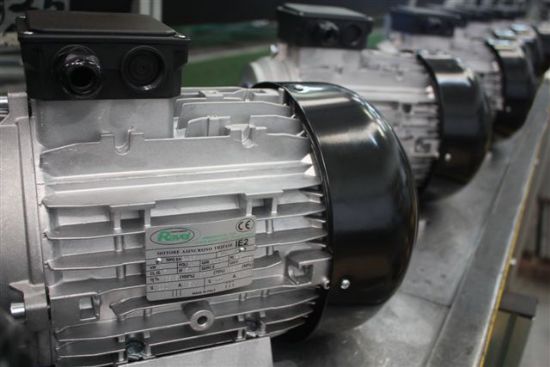Technical Info
High Efficiency

Over two-thirds of the energy used by industry is consumed by electric motors, hence the need to limit energy usage and reduce CO2 emissions and this necessity has resulted in the issue of Directive 2005/32/EC and subsequent creation of Commission Regulation (EC) No 640/2009 by the European Commission on "ecodesign requirements for electric motors."
This Regulation establishes specifications for ecodesign in order to place high efficiency electric motors on the market with minimum performance requirements that will increase over time and which came into force on June 16, 2011.
This Regulation establishes specifications for ecodesign in order to place high efficiency electric motors on the market with minimum performance requirements that will increase over time and which came into force on June 16, 2011.
New regulations in the field of efficiency were introduced by IEC committee, in particular IEC 60034-2-1 which is the new standard for measuring performance of electric motors and IEC 60034-30 for the classification of electric motors (IE Code), which tend to harmonize international efficiency standards.
The eco-design specification is applied according to the following schedule:
The eco-design specification is applied according to the following schedule:
1) as of 16 June 2011 motors shall have as a minimum efficiency level IE2
2) as of 1 January 2015 motors with power ratings between 7.5 and 375 kW must have at least an IE3
efficiency level or a IE2 efficiency level and shall be equipped with a frequency inverter.
3) as of 1 January 2017 all motors with power ratings between 0.75 and 375 kW must have at least the IE3
efficiency level or the IE2 efficiency level and shall be equipped with a frequency inverter.
Three-phase asynchronous motors are covered by the standard if they:
• have a UN motor voltage up to 1000 V;
NOTE: The standard also applies to motors for two or more voltages and / or frequency ratings.
• have a PN power rating between 0,75 kW and 375 kW;
• have 2, 4 or 6 poles;
• have an ID plate or on the basis of duty type S1 (continuous duty) or S3 (intermittent periodic duty) with a duty cycle rating equal to or greater than 80%;
• are able to work connected directly to power line;
• are suitable for operating conditions in accordance with IEC 60034-1, Art. 6.
Motors with flanges, feet and / or shafts with mechanical dimensions different from those stated in IEC 60072-1 are covered by this regulation.
Gear motors and brake motors are covered by this standard even if special shafts and flanges can be used in these motors.
Motors that are excluded:
• motors made esclusively for use with a converter in accordance with IEC 60034-25.
• motors completely integrated within a machine (e.g. pumps, fans and compressors) which can not be tested separately from the machine.
Ravel has always been very sensitive to the issue of energy efficiency: the high-efficiency IE2 series of motors has been in its catalogue for quite some time and the company has added PREMIUM IE3 efficiency motors, products which satisfy even higher minimum efficiency requirements.
Other existing exemptions have been changed by the new Regulation 4/2014 / EC of the European Commission, which varies Article 1 by inserting more restrictive parameters and thus the regulation does not apply to motors designed specifically to work:
• more than 4,000 meters above sea level
• at air temperatures above 60 ° C.
• at air temperatures below -30 ° C.
Ravel has always been very sensitive to the issue of energy efficiency: the high-efficiency IE2 series of motors has been in its catalogue for quite some time and the company has added PREMIUM IE3 efficiency motors, products which satisfy even higher minimum efficiency requirements.





